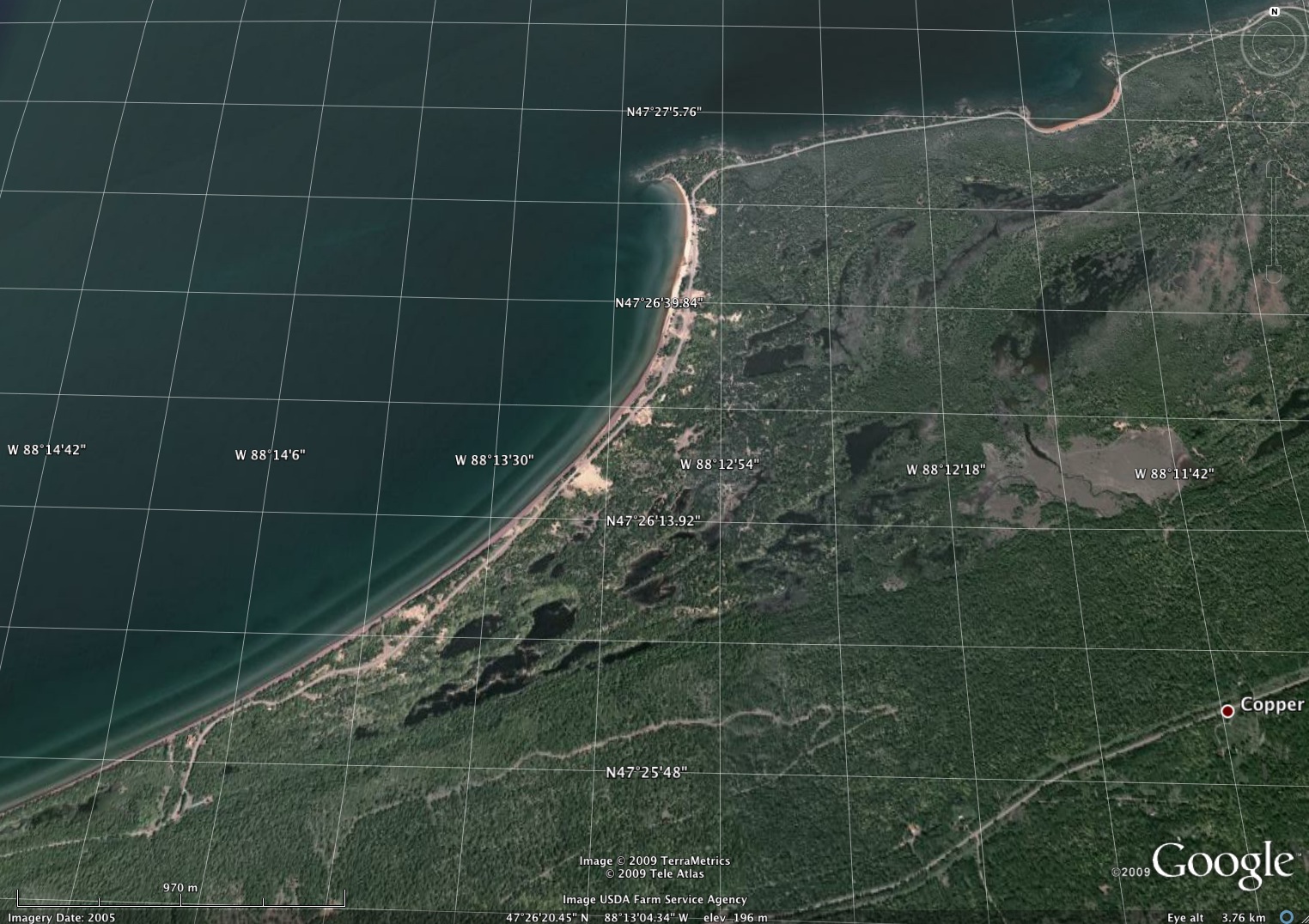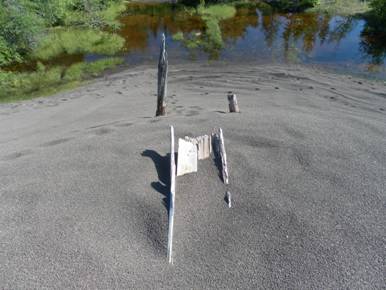|
Connection to the Earth Science
Curriculum
Essential
Lessons:
- Do you think humans have impacted this
area? If so, what are some scientific
tests that could be done to prove this?
- Explain some ideas you
may have to remediate the current situation of the Owl Creek
Sands?
Earth Science Literacy
Principles-
Big Idea 9: Humans significiantly alter the Earth
9.5
Human
activities alter the natural land surface.
Humans
use more than one-third of the land’s surface not covered
with ice to raise or grow their food. Large areas of land,
including delicate ecosystems such as wetlands, are transformed by
human land development. These land surface changes impact many
Earth processes such as groundwater replenishment and weather
patterns.
9.7
Human
activities significantly alter the biosphere.
Earth
is experiencing a worldwide decline in biodiversity—a modern
mass extinction—due to loss of habitat area and high rates of
environmental change caused by human activities. The rates of
extinctions are now comparable to the rates of mass extinctions in
the geologic past.
Owl Creek Sands fits well with Big
Idea 9, because it illustrates the devastation that humans can
leave behind even without intending to do harm. The occurrences here may not have forced living
things into extinction, but it certainly is a fantastic model of
how this can happen if humans do not take care of the
Earth.
Common misconceptions
If you excrete waste into water,
that the “law of dilution”, will lessen the impact on
Earth.
The above is a common belief because often
humans do not believe what we cannot see. The truth is that everything that we deposit in
the Earth including atmosphere, can have harmful repercussions in
the future. As technologies advance we
are finding out ways to prevent poor choices that would harm the
environment.
Michigan State Science Content Expectations
Addressed:
K-7 Standard L.EV: Develop
an understanding that plants and animals have observable parts and
characteristics that help them survive and flourish in their
environments. Understand that fossils provide evidence that life
forms have changed over time and were influenced by changes in
environmental conditions. Understand that life forms either change
(evolve) over time or risk extinction due to environmental changes
and describe how scientists identify the relatedness of various
organisms based on similarities in anatomical
features.
L.EV.M.1
Species Adaptation and Survival- Species with certain traits are
more likely than others to survive and have offspring in particular
environments. When an environment changes, the advantage or
disadvantage of the species’ characteristics can change.
Extinction of a species occurs when the environment changes and the
characteristics of a species are insufficient to allow
survival.
L.EV.05.11
Explain how behavioral characteristics (adaptation, instinct,
learning, habit) of animals help them to survive in their
environment.
L.EV.05.12
Describe the physical characteristics (traits) of organisms that
help them survive in their environment.
L.EV.05.13
Describe how fossils provide evidence about how living things and
environmental conditions have changed.
L.EV.05.14
Analyze the relationship of environmental change and catastrophic
events (for example: volcanic eruption, floods, asteroid impacts,
tsunami) to species extinction.
Date Visited: 7-12-11
|

Just
North of Copper Falls off Highway 41, you will find a winding
series of two tracks that few travel.
Those that succeed will be impressed as you make your
approach. When you arrive at the Owl
Creek Sands, you will be above the actual sands and you will notice
a sea of grey, surrounded by a sea of green vegetation. This absolutely breathtaking landform has only
been seen by the humans that make the rough voyage.
Coordinates: Latitude: N47
26.306 W088 11.826

Figure
#1, Owl Creek GPS View, 2009 (Picture
by Terra Metrics)
Key
Earth Science/ Geological Vocabulary Words:
Stamp Sand:
The remains of the earth after being crushed and the copper
particles have been removed.
Elevation Difference:
The numerical difference between two elevations.
Sedimentation:
The action or process of forming or depositing
sediment.
Delta:
an area of low land along the mouth or a river.
Content Explanation:
This site explains the significance that
humans have on our earth. This man made
geological feature tells the story of the American Dream of
“getting rich,” even at the expense of innocent living
creatures in nature. This low lying
area was once filled with water where very small organisms to large
animals flourished, only to be pushed out by the stamp
sand.
The rock that was mined was crushed and the fresh water of the area
was then used to separate the sand from the copper
particles. The copper particles were
heavier than the crushed rock, now called stamp sand, so this made
it easy for the miners to sort the copper from the by-product stamp
sand. Rivers were an excellent natural
resource to sort the copper. The
control of water flow would also lend itself to control deposition
of the stamp sand. The slower the flow
deposition occurs, which lets the sedimentation process begin and
the delta then appears. The water
slowing down left this large amount of stamp sand deposition that
we have here today. The percentage of
sand to copper was approximately 97% Stamp Sand to 3%
Copper. The current state of the Owl
Creek Stamp Sands does not promote vegetation or animal life.
Figure
#2 View from the
entrance to the Owl Creek Sands. 2011 (
Picture by M.Short)
Logging Question:
To fully comprehend how much stamp sand is located at this site,
take an elevation reading at the top of the sands. Next, take a reading at the lowest point of the
sand deposition. Now, figure the
difference of the two elevation points.
(High
Elevation – Low Elevation = Difference of
Elevation)
Including your difference elevation number, write me a short
narrative about how you think man has disrupted the natural
environment that was once present?

Figure #3, View from the top of the sands to
the lowest elevation. ( Picture by M.Short)
References:
Copper Country Media, LLC,
(2008-2011) Copper Country Explorer,
http://www.coppercountryexplorer.com/2007/01/owl-creek-fissure/
Michigan Department Of Education;
Retrieved (2011, Aug 12)
http://www.michigan.gov/mde/0,1607,7-140-28753_33232---,00.html
Schaetz, R &Darden, J (2009)
Michigan Geography and
Geology .
Custom Publishing, New York.
TerraMetrics ; Tele
Atlas; USDA Farm Service Agency (2009)
Retrieved (2011, Aug 12).
http://www.geo.mtu.edu/~raman/MiTEP-ESS-1/GreatSandBay-OwlCr.jpg
|